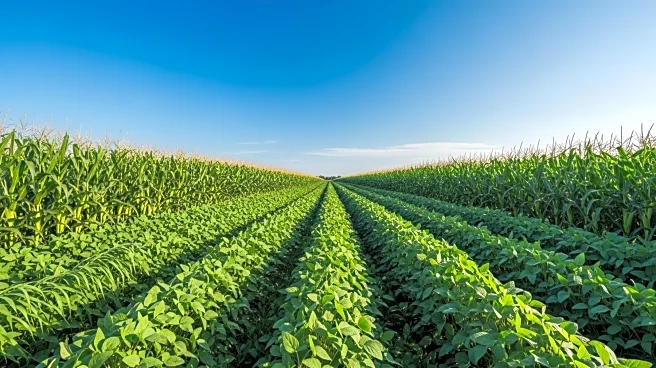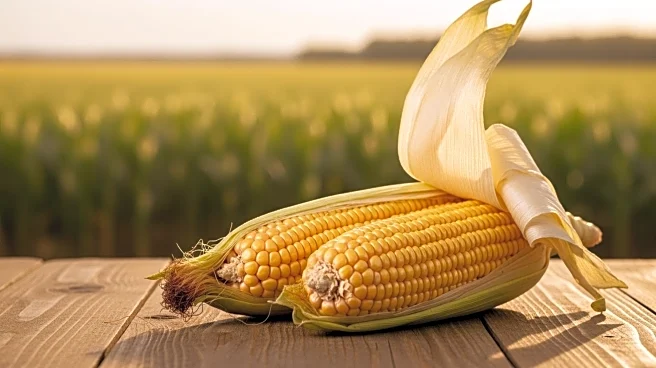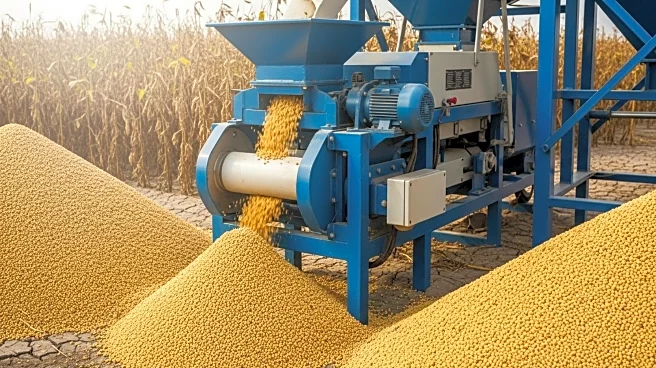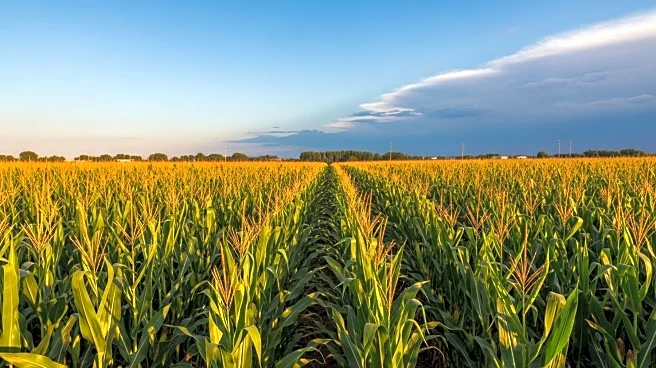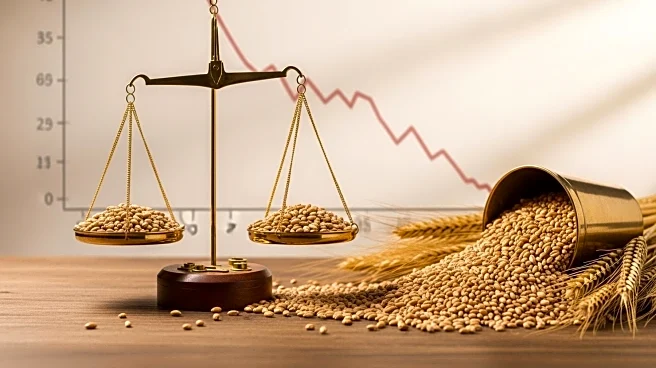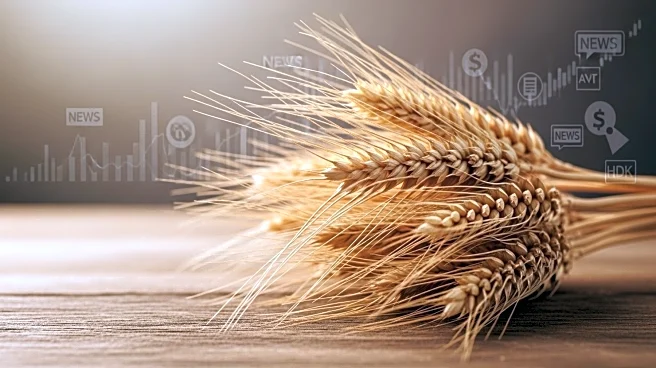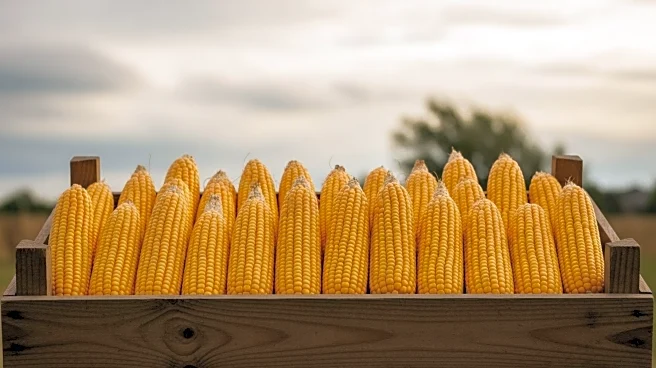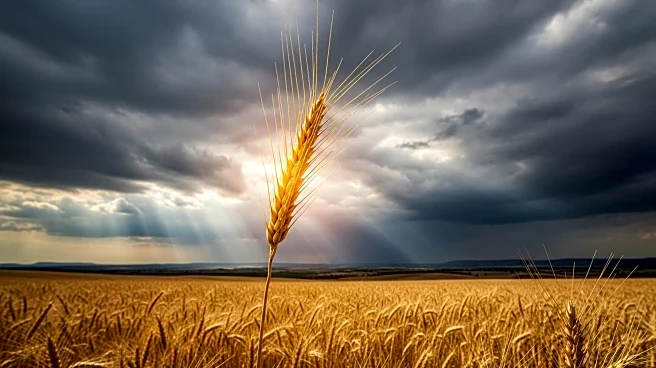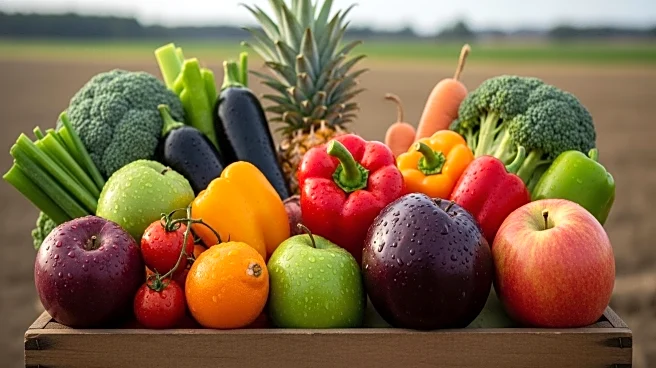What is the story about?
What's Happening?
The USDA has released its 22nd Crop Progress report for the 2025 growing season, highlighting a decline in the condition of corn and soybean crops across the United States. As of August 31, 90% of the corn crop in the top 18 corn-growing states had reached the dough growth stage, slightly below the five-year average of 91%. Additionally, 58% of the corn crop had reached the dent stage, trailing the five-year average by 2 percentage points. The maturity of the corn crop is slightly ahead of the average, with 15% reaching maturity. The condition ratings for corn show a decrease, with 69% rated as good or excellent, down 2 points from the previous week. Soybean conditions have also declined, with 65% rated as good or excellent, a drop of 4 points week-over-week. The report indicates that 94% of the soybean crop has reached the setting pods stage, aligning with the five-year average, while 11% has reached the dropping leaves stage, slightly ahead of average.
Why It's Important?
The decline in crop conditions for corn and soybeans is significant for the agricultural sector, impacting farmers and the broader economy. Corn and soybeans are critical components of the U.S. agricultural output, influencing food supply chains and commodity markets. A decrease in crop quality can lead to lower yields, affecting prices and profitability for farmers. This situation may also have downstream effects on industries reliant on these crops, such as livestock feed and biofuel production. The report's findings could prompt adjustments in market forecasts and influence policy decisions related to agricultural support and trade.
What's Next?
Farmers and industry stakeholders will likely monitor weather patterns and disease threats closely, as these factors can further impact crop conditions. The spread of diseases like Southern Rust in the Corn Belt poses additional risks. Stakeholders may advocate for increased support and resources to mitigate these challenges. The USDA's future reports will be crucial in assessing ongoing crop conditions and guiding decision-making for the remainder of the growing season.
Beyond the Headlines
The decline in crop conditions may also raise concerns about the sustainability of current agricultural practices and the need for innovation in crop management. As climate change continues to affect weather patterns, the agricultural sector may need to adapt to ensure resilience against environmental stressors. This situation underscores the importance of research and development in agriculture to enhance crop resistance and improve yield outcomes.
AI Generated Content
Do you find this article useful?
